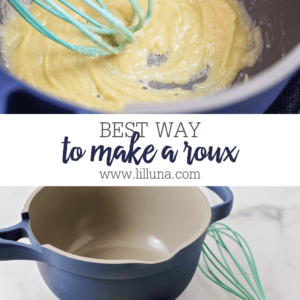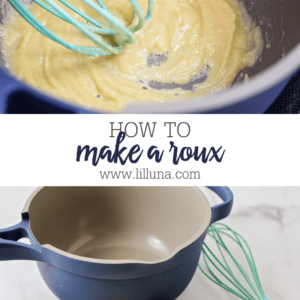This post may contain affiliate links. Please read our disclosure policy.
Roux are often used as a thickening agent when making sauces. Learn how to make a roux with these step-by-step directions!
Biscuits and Sausage Gravy and Broccoli Potato Soup are just a few recipes that use a roux to thicken it. Use these simple steps and learn how to make a roux yourself!
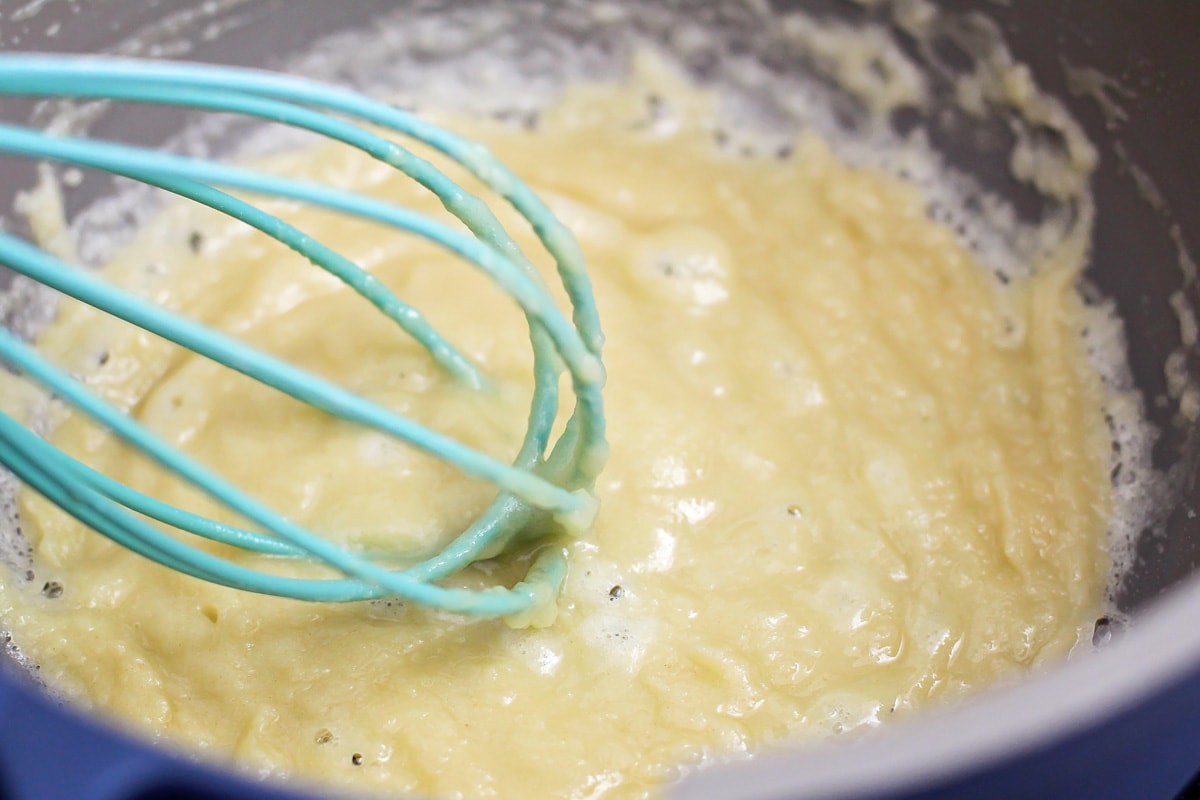
Thicken Your Sauce
A roux (pronounced “roo”) is a mixture of equal parts fat and equal parts flour that is cooked. While being heated the fat coats the starch in the flour. When added to a liquid, it will thicken it to create a smooth sauce.
The recipe will determine how long you will cook the roux. Light roux has the most thickening properties while brown and darker roux have the most flavor.
The length of time that you heat it will determine what type of roux you need.
- White roux is cooked just enough to eliminate the raw flour taste. It is used as a thickening agent for sauces like cheese sauces, white sauces, and béchamel sauce.
- Blond roux is a light peanut butter color and is used to thicken gravies and creamy soups.
- Brown roux. After about 15 minutes it will start to darken to a milk chocolate color and take on a nutty flavor. This roux is used to flavor and thicken brown gravies.
- Dark roux. After about 30 minutes the roux becomes significantly darker like dark chocolate, with a nuttier aroma, and a runnier texture, and no longer has thickening abilities. It is often used in Creole and Cajun cuisine like gumbo.
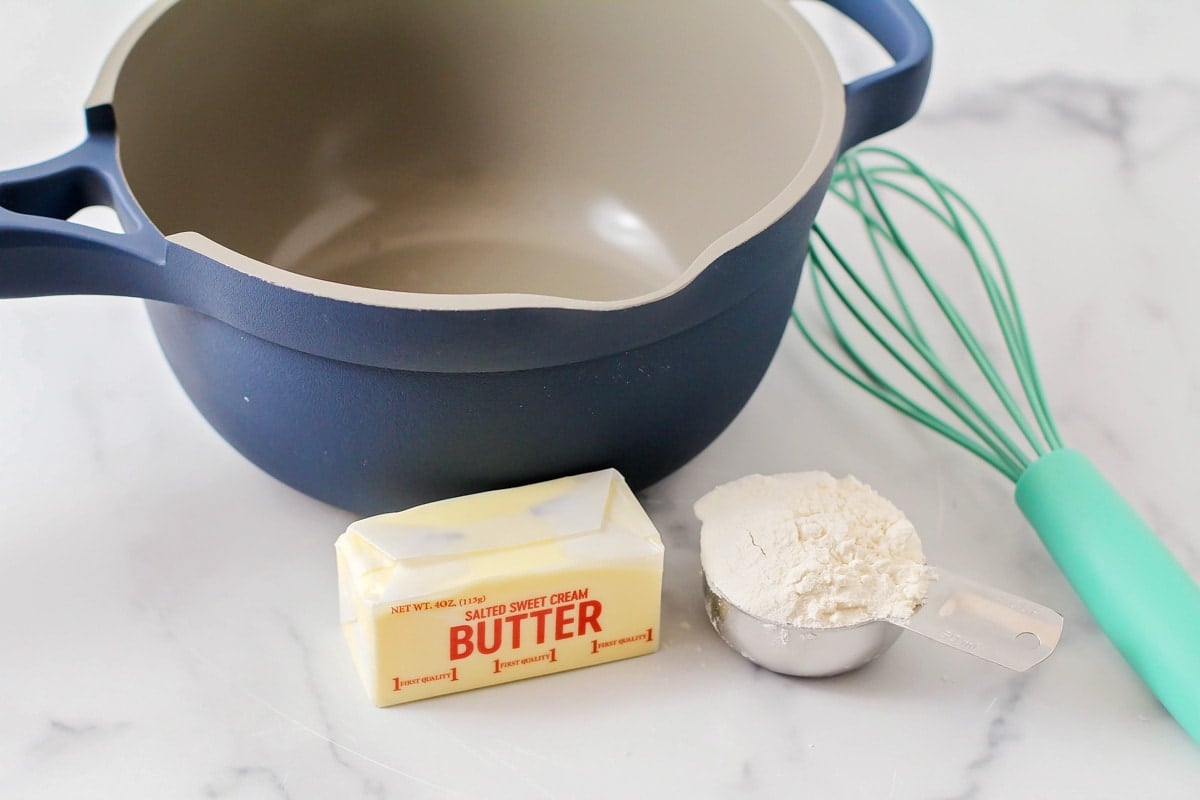
How to Make a Roux
Making a roux is quite simple!
Use the following for an exact 1:1 ratio (weighed). This ratio is often used to make white or blond roux that will thicken 3-4 cups of sauce. Note that since you need to cook it down for a longer period of time to make a brown or a dark roux you may wish to increase the amounts used to make a brown or dark roux.
¼ cup all-purpose flour
3 tablespoons butter (oil or lard)
BUTTER. Melt butter in a skillet over medium-low heat. Stir until the butter has melted.
FLOUR. Add flour. Using a whisk mix the flour into the butter until combined and thick.
- White roux cook and stir for 3-5 minutes
- Blond roux cook and stir for 5-10 minutes
- Brown roux cook and stir for 15-30 minutes
- Dark roux cook and stir for 30-45 minutes
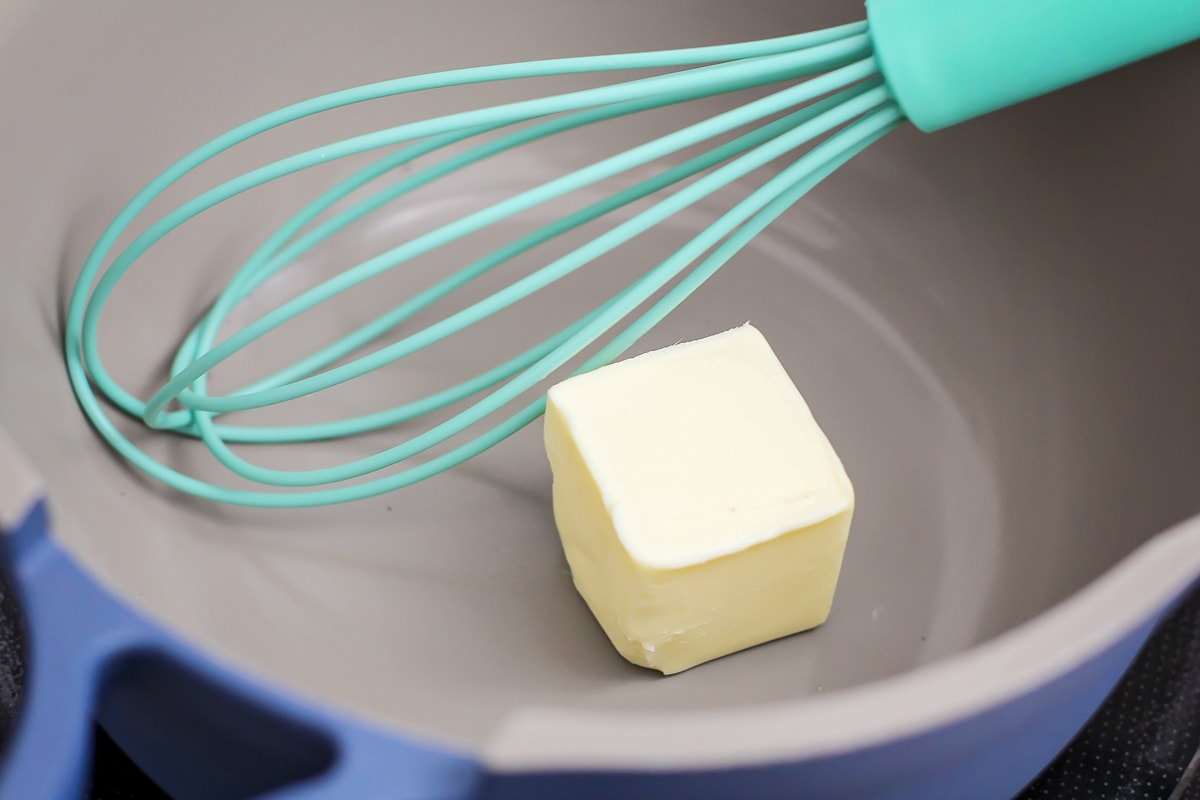

Storing Info
STORE. Mix up a larger batch and keep it stored in the refrigerator or freezer to use in upcoming recipes. This is especially useful for brown or darker roux which can take 30-45 minutes to make.
- Fridge: Store in an airtight container. If you use butter as the fat then it can last for 2-3 weeks. If you use oil as the fat, it will last for several weeks.
- Freezer: You can freeze in ¼ cup portions or use ice cube trays to measure out 1-2 tablespoon portions and freeze. Once solid place the individual portions in a larger freezer bag. They will last for up to 6 months. Reheat slowly before using it in a recipe.
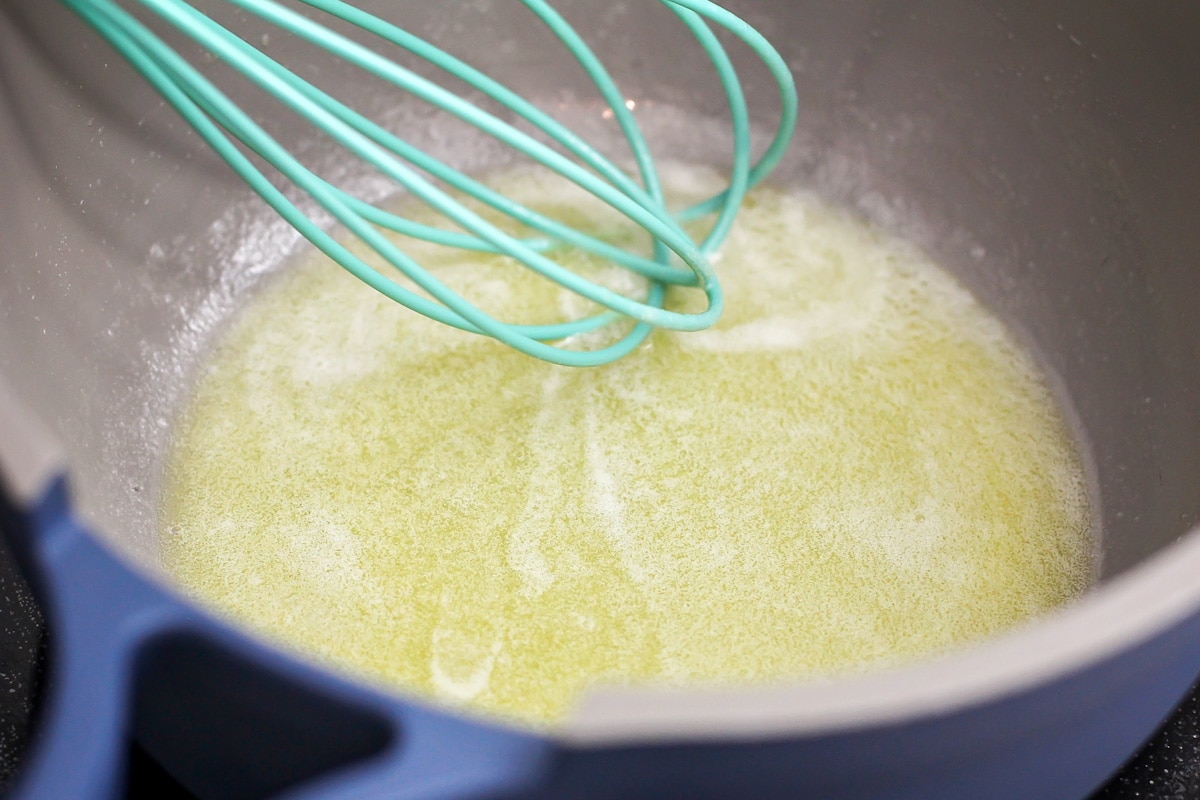

Ingredient Tips
A roux only requires two ingredients: fat and flour!
Fat. A very common fat used is butter, but oil, lard, bacon fat, or drippings from a roasting pan can also be used.
- Butter, bacon grease, and dripping all have lower smoking points and should not be used for brown or dark roux.
- Lard and oil, such as vegetable oil, canola oil, or peanut oil, have a high smoking point and can be used to make light to dark roux.
- Some fats will infuse extra flavor so be sure to choose one that pairs well with the dish.
Ratio. I have found the 1:1 ratio does not have to be exact in order for it to do its job and more experienced cooks often eyeball the amounts. However, for a precision, the ratio between the fat and flour is 1:1 (according to weight not volume). Since a ¼ cup of all-purpose flour weighs less than ¼ cup of oil I pulled out my kitchen scale to see what the weight ratios are.
- ¼ cup of all-purpose flour (that I spooned into the measuring cup and leveled off) weighed 1.3 ounces.
- ¼ cup of butter, vegetable oil, and bacon fat each weighed 2 ounces.
With that in mind, I decided to find out exactly how much I would need to make it balanced:
- If I use ¼ cup of flour (1.3 ounces) then I would need 3 tablespoons of fat (1.3 ounces).
- If I used ¼ cup of fat (2 ounces), then I would need ⅓ cup + 1½ tablespoons of all-purpose flour (2 ounces).
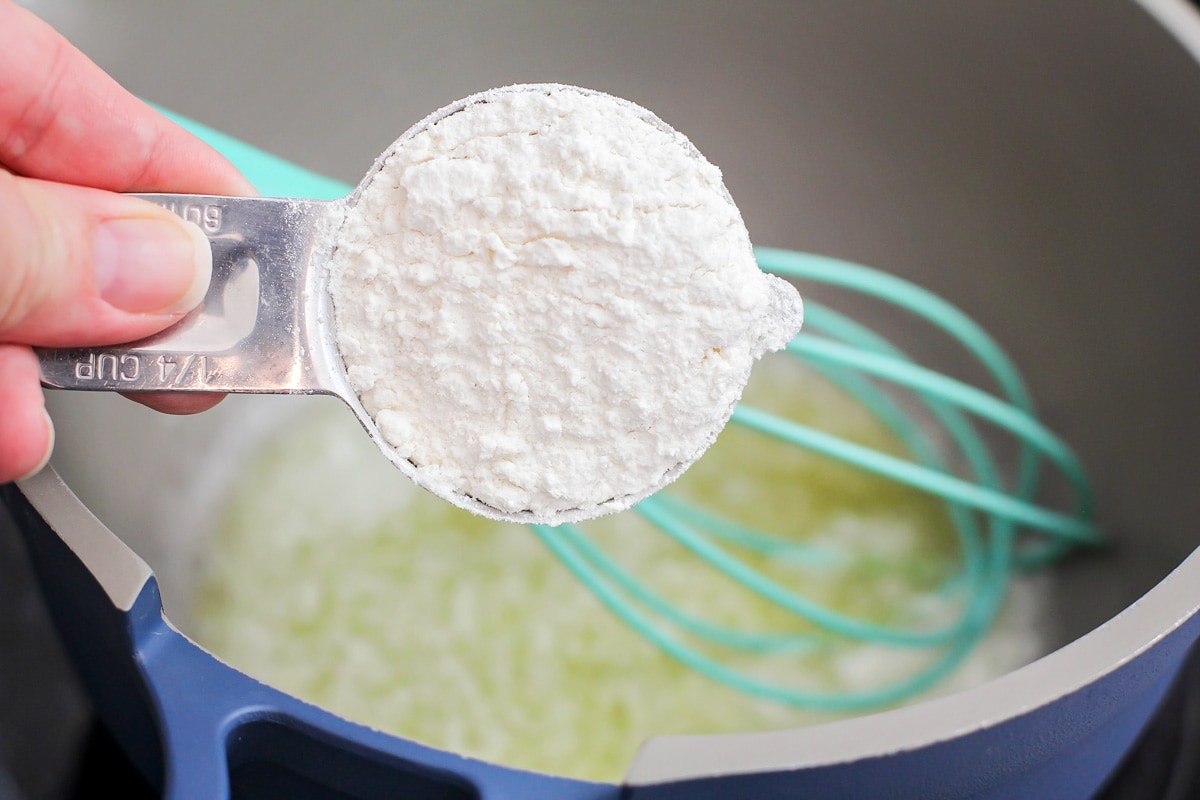
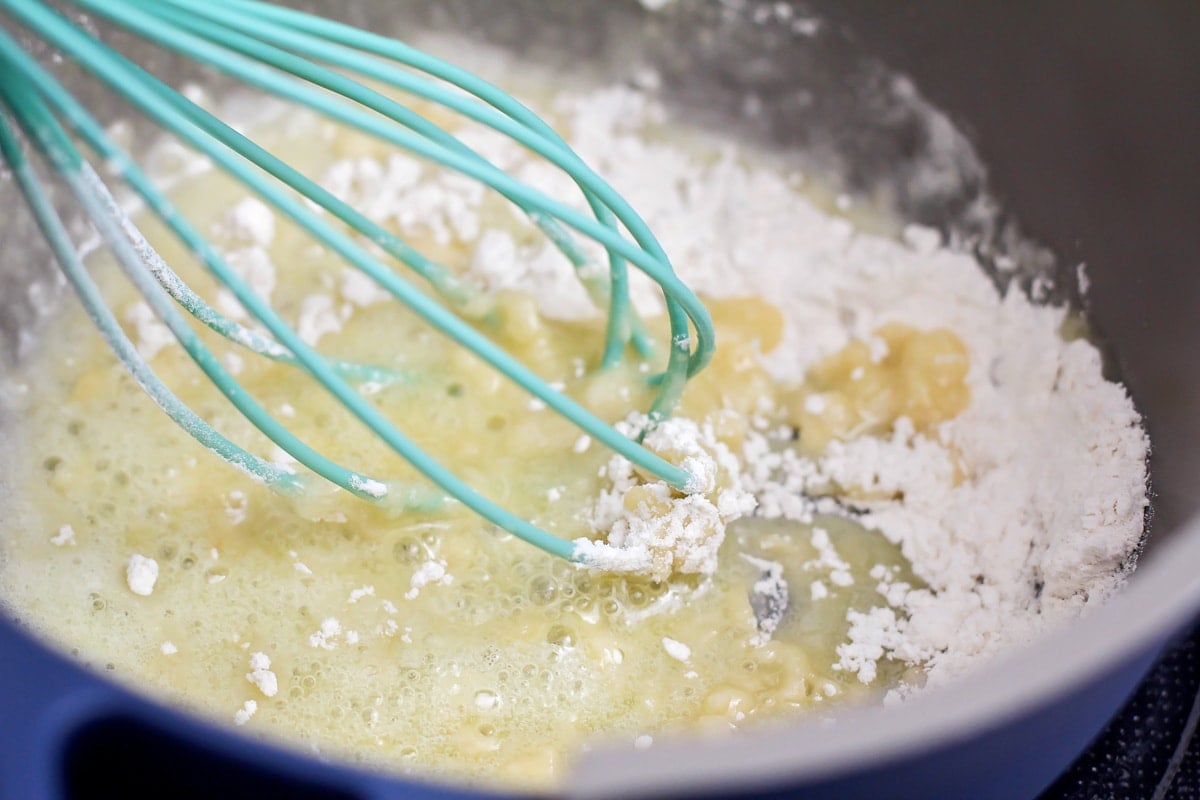
Roux Making Tips
It’s important to cook a roux long enough to remove the “flour flavor”, but not to overcook it! Use these tips for the perfect sauce starter.
Pan. Use a heavy-bottomed pan, like a cast-iron skillet, for an even cook.
Liquid. Adding cold liquid to a hot roux can cause the butter to clump. I suggest using warm, not hot, liquid.
Heat. Never cook on high heat stick to medium-low heat.
Be patient, especially when cooking a dark roux. You may be tempted to turn up the heat to speed up the process but you run the risk of burning it and you’ll have to start over.
Stirring. Use a whisk to begin and then switch to a wooden spoon or silicone spatula and stir constantly.
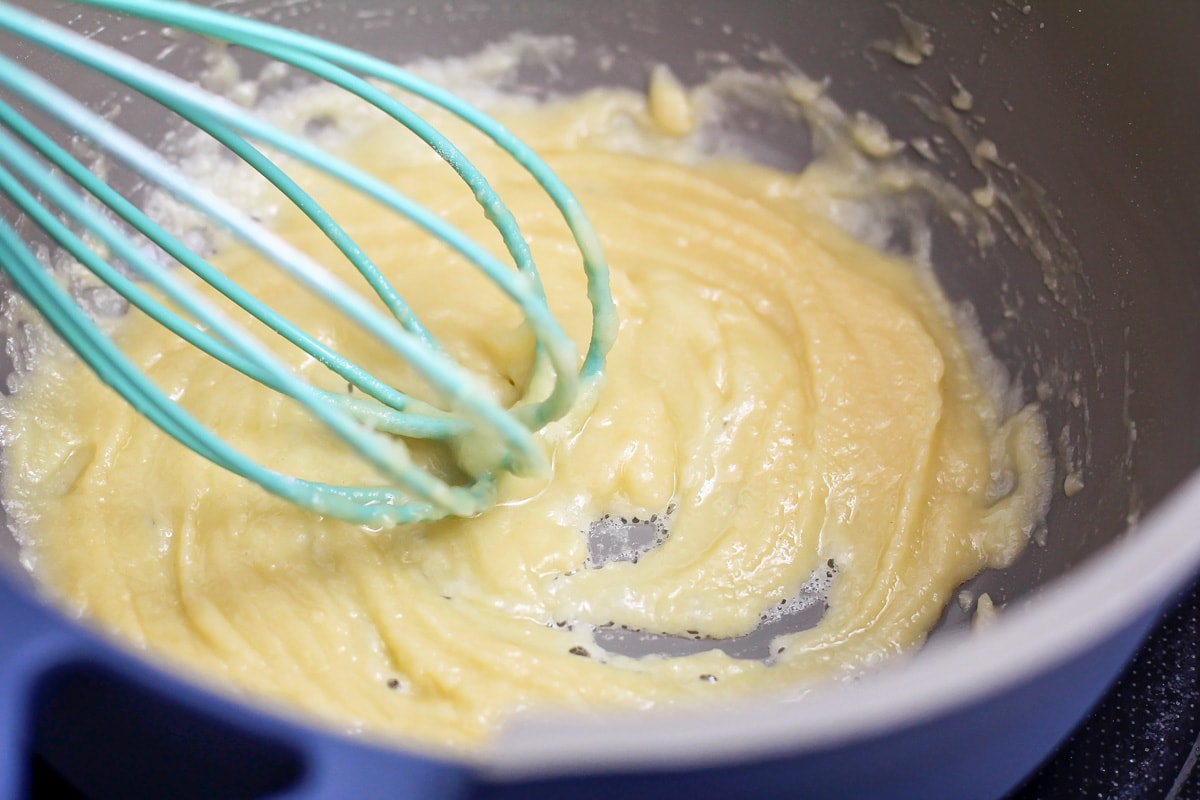
How to Use a Roux
Here are a couple of ways to use your roux!
Use in a recipe. Many creamy soups and sauces direct you to make a roux as part of the recipe. Cook to the desired color. From there you will be adding a liquid such as milk. Whisk the liquid in a small amount at a time. It may create a paste-like texture at first but don’t worry it will smooth out and thicken as more liquid is added.
Use to thicken sauces. Once you are done with a recipe you may decide that you want the soup or sauce to be thicker. You do not want to just add more flour directly to the soup or sauce because it can clump together and no one wants to take a bite to find a pocket of powdery flour. Instead, mix up a light roux in a saucepan and then stir it into the soup or sauce.
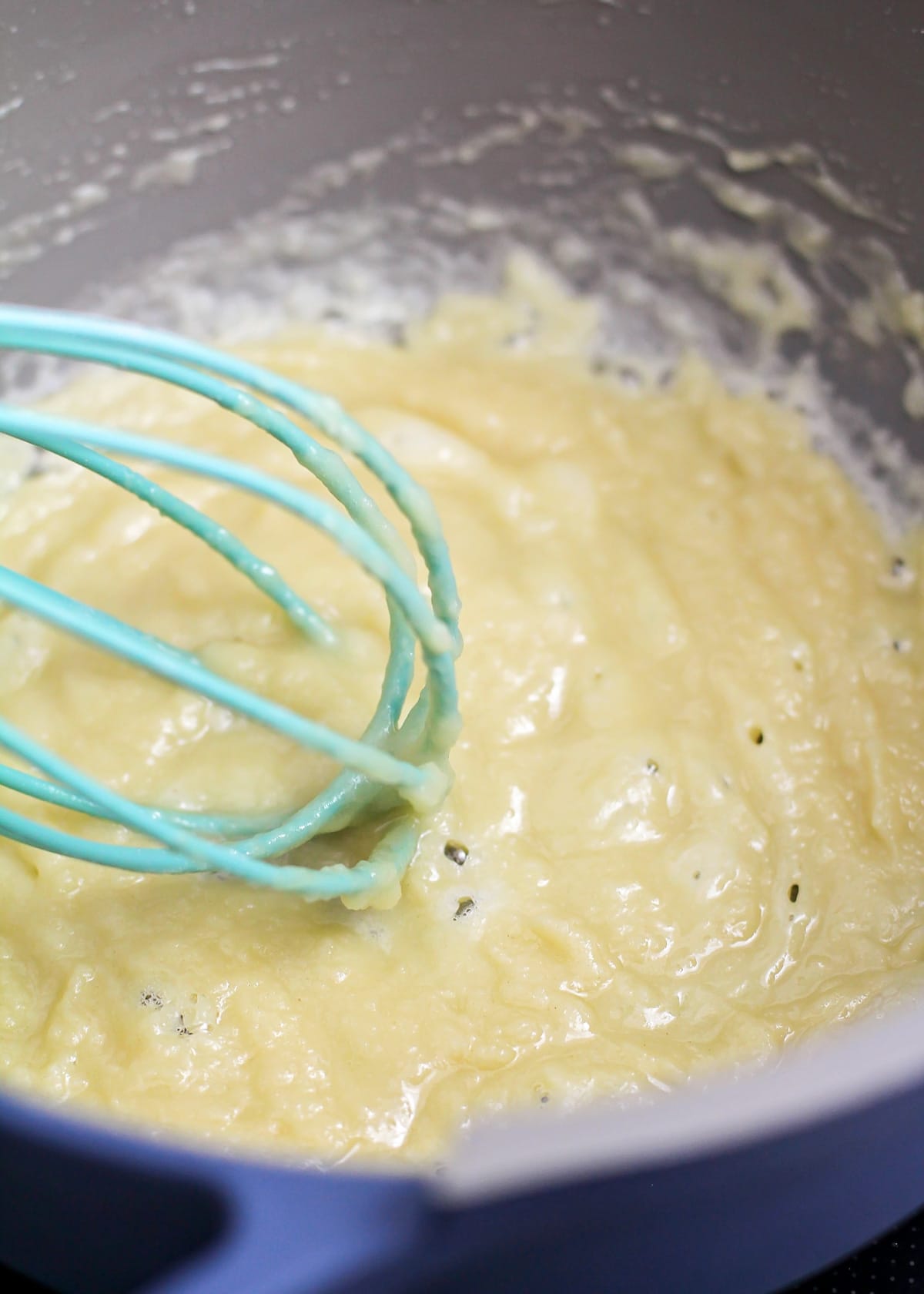
Recipe FAQ
While it is recommended to use an equal parts ratio of fat and flour for a traditional roux, it doesn’t have to be exact. Experienced cooks often eyeball the amounts and adjust as needed. However, for a precise roux, the ratio between the fat and flour is 1:1 (according to weight, not volume).
Roux is commonly made with wheat flour, but you can sub in any starchy flour, such as rice flour or potato flour. You can also mix cornstarch or arrowroot powder with water to form a slurry before adding it to the pan and cooking it with the fat.
Ultimately, the choice of fat depends on your personal preference and the flavor profile you want to achieve. Butter is the most common but vegetable oil, canola oil, olive oil, lard, or bacon fat can all be used.
For Recipes That Use a Roux, Check Out:
- Queso Blanco
- Broccoli Cheese Soup
- Homemade Mac and Cheese
- Pot Roast Gravy
- Chicken Pot Pie
- Cheese Enchiladas
- Creamy Garlic Penne Pasta
- Pasta Bake
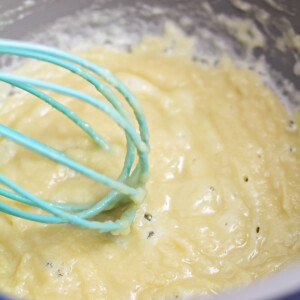
How to Create a Roux
Ingredients
- ¼ cup all-purpose flour
- 3 tablespoons butter oil or lard
Instructions
- Melt butter in a skillet over medium-low heat. Stir until the butter has melted.
- Add flour. Using a whisk mix the flour into the butter until combined and thick.
Video
Notes
- White roux cook and stir for 3-5 minutes
- Blond roux cook and stir for 5-10 minutes
- Brown roux cook and stir for 15-30 minutes
- Dark roux cook and stir for 30-45 minutes
Nutrition
Nutrition information is automatically calculated, so should only be used as an approximation.









